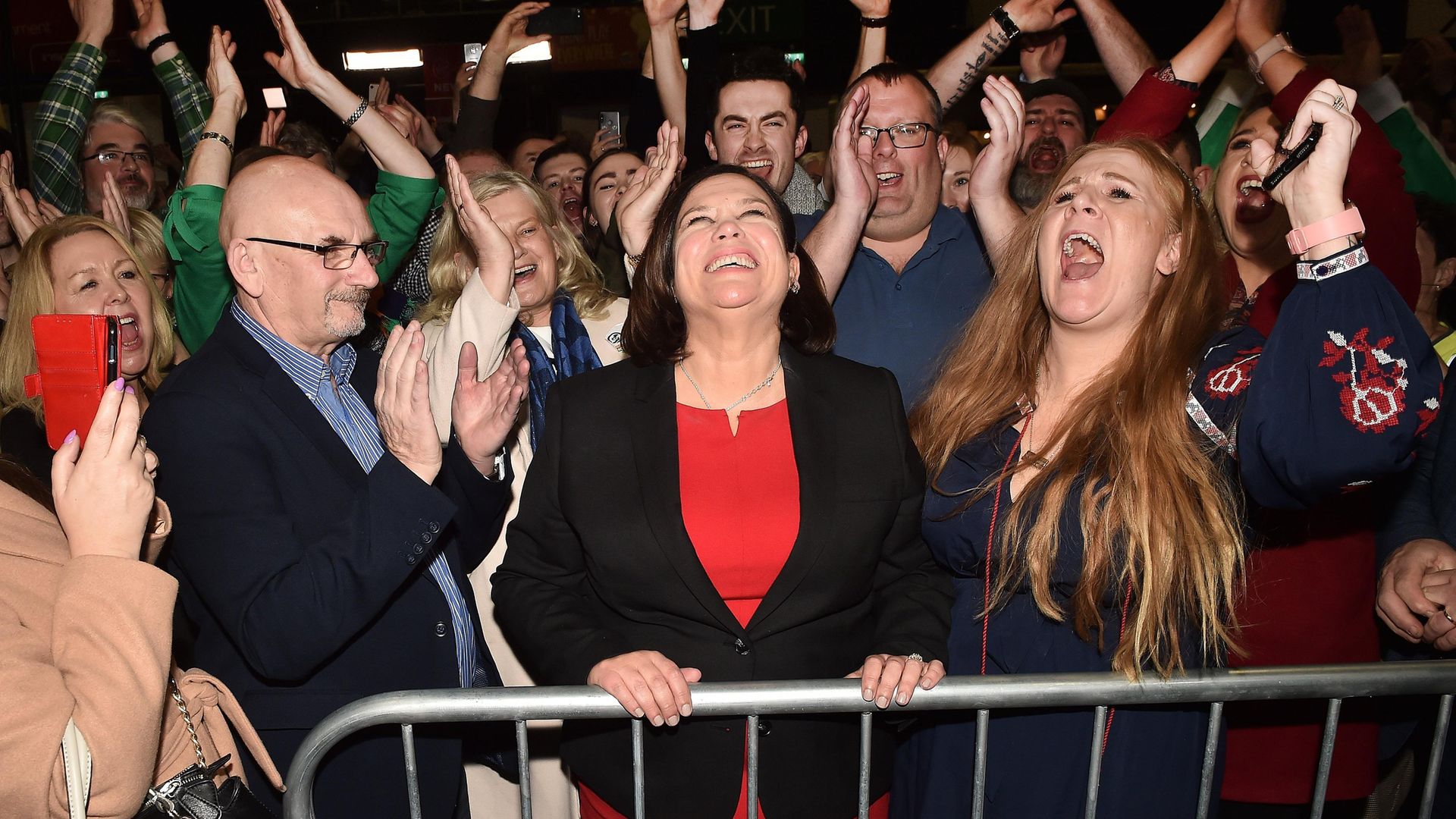
Against the backdrop of Sinn Féin’s seemingly inexorable electoral rise and the prospect of a border poll also increasing, MAX McGUINNESS reviews a timely book on the political history of the IRA
Over the past four decades, Sinn Féin has built one of the most extensive and effective political machines in Europe. Having originated as a front for the Provisional IRA, which disdained electoral politics, the party now regularly triumphs at the polls. Its representatives sit in three different legislatures – the Irish Oireachtas, the Northern Ireland assembly, and the European parliament – as well as councils across both parts of Ireland.
The party also boasts seven Westminster MPs (who refuse to take their seats in keeping with Irish republican doctrine). Since the Second World War, no other paramilitary group in Europe has made such a successful leap into democratic politics.
Sinn Féin’s vice president Michelle O’Neill is deputy first minister in the Northern Ireland executive, where it also holds the finance brief. In the Republic, Sinn Féin won more first-preference votes than any other party at last year’s general election and now leads the opposition with 37 seats (up from 14 in 2011).
Current polling suggests the party is well placed to lead the next government. With power across the island in sight for the first time, its leaders have begun campaigning for a border poll to bring about a united Ireland.
To amplify that demand, the party’s US fundraising arm recently published half-page advertisements in the New York Times and the Washington Post.
Sinn Féin can easily afford such propaganda since it has been long been the richest party in Ireland, where it owns more than 50 properties and employs about 200 staff.
Much of the party’s wealth derives from long-term fundraising in the US. It also extracts hefty contributions from its elected representatives’ official salaries. And, in what is surely a stunning coincidence, Ireland’s Criminal Assets Bureau has, since the mid-1990s, seized at least 28 million euro from individuals connected to the Provisional IRA.
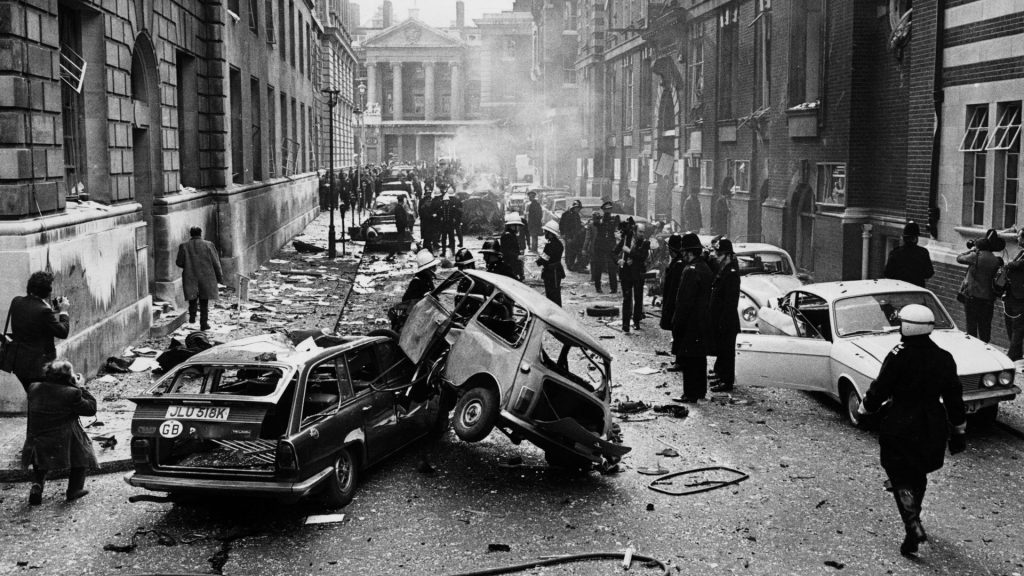
The party’s heady ascent might be expected to stir open debate and competition as rival personalities and factions jostle for position. But Sinn Féin usually manages to keep any internal disagreements out of public view.
Despite frequent social media gaffes, elected representatives display Soviet levels of message discipline on matters of fundamental party policy. Ordinary members, numbering around 15,000, are required to be equally obedient. And the outcome of votes at the annual party conference (known as the Ard Fheis) is a foregone conclusion.
Notwithstanding its distinctly old-fashioned approach to party discipline, Sinn Féin enjoys substantial support among young voters in the Republic, who are drawn to its leftish policies on housing, education, and healthcare.
The party’s public leaders are themselves youthful and have no record of IRA involvement. The IRA nonetheless still exists in reduced form, and, according to the Police Service of Northern Ireland, its Army Council continues to “oversee” Sinn Féin.
Indeed, the party has never clearly repudiated its founding principle that the IRA Army Council itself constitutes the true government of Ireland. But intelligence assessments also indicate that the IRA remains committed to the peace process and that its focus is now resolutely political.
If and when Sinn Féin enters government in the Republic, that development will complete a remarkable turnaround for an organisation that began life with an entirely different ethos.
For, as Daniel Finn outlines in One Man’s Terrorist: A Political History of the IRA, the party’s roots lie in its repudiation of a version of the strategy it now embraces.
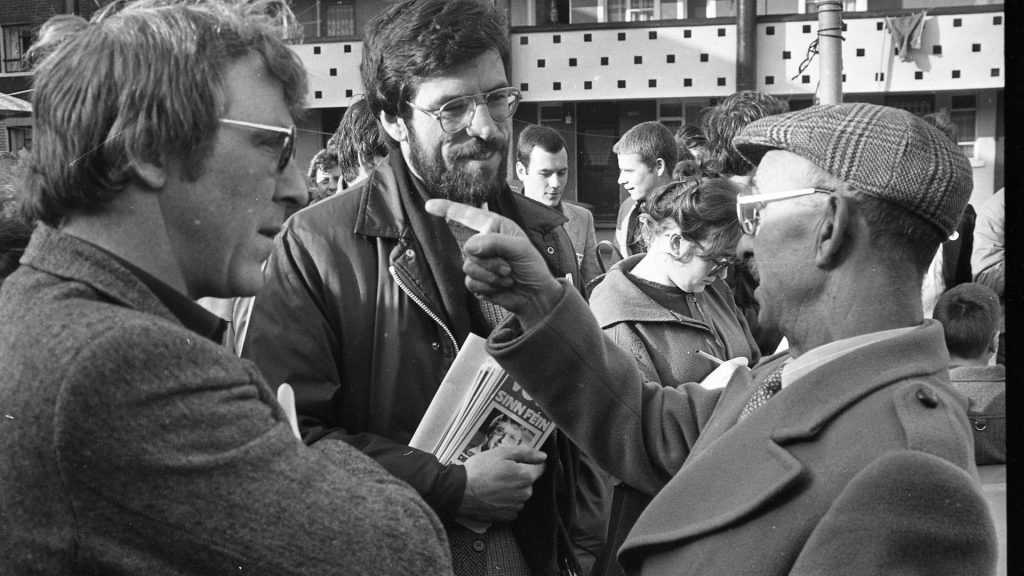
As Northern Ireland was engulfed by sectarian violence in the late 1960s, conservative IRA members concentrated in Belfast became frustrated that the organisation’s Dublin-based leadership had begun to revise its traditional aim of driving the British out through force in favour of pursuing left-wing socio-political reforms.
In 1969, one veteran IRA man pointedly extolled “the only methods that will ever succeed, not the method of the politicians, nor the constitutionalists, but the method of soldiers, the method of armed force”.
In a swipe at the IRA leadership’s new Marxist-influenced outlook, he added that members were “now expected to be more conversant with the teachings of Chairman Mao than those of our dead patriots”.
By the following year, the IRA and its political wing Sinn Féin had split. One faction – the ‘Officials’ – resolved to contest elections, take any seats they won, and appeal to working class solidarity across the sectarian divide in Northern Ireland.
They briefly pursued a military campaign against British rule before calling a ceasefire in 1972 and, having rebranded as The Workers’ Party, went on to enjoy some limited electoral success in the Republic.
Their opponents – the ‘Provisionals’ or ‘Provos’ – vowed to continue waging war against the British state without getting caught up in ideological distractions or elections to parliaments they did not recognise.
They quickly gained the upper hand among republicans in Northern Ireland and were ultimately responsible for around half the circa-3,500 killings during the Troubles.
But despite becoming, in the words of a RAND Corporation survey for The Pentagon, “one of the most ruthless and capable insurgent forces in modern history”, the Provos never came close to forcing a British withdrawal. And, by the early 1980s, they too began to enter politics and eventually evolved into the electoral juggernaut of today’s Sinn Féin.
The story of that shift from hard-line militarism to political “peace processing” is a familiar one. It is usually framed as the consequence of a military stalemate that led IRA leaders, principally Gerry Adams, to reassess their view of the Northern Irish statelet.
Having launched their war on the basis that reform was impossible, they wound up grudgingly accepting a series of compromises that had been devised by their rivals in the moderate nationalist Social Democratic and Labour Party (SDLP).
The central principles consisted of civil rights for the Catholic minority, power-sharing between nationalists and unionists within a devolved assembly, and an agreement that Irish unity could be obtained by democratic consent.
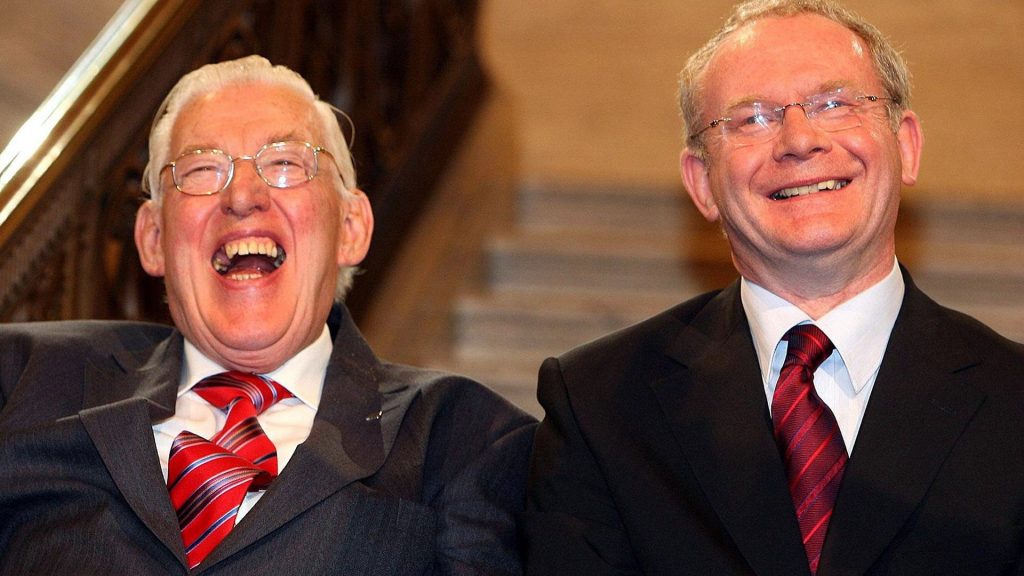
That settlement was already on the table in the 1973-74, when combined republican and unionist hostility, along with British feebleness, scuppered the Sunningdale Agreement (thence SDLP politician Seamus Mallon’s remark that the Good Friday Agreement of 1998 represented “Sunningdale for slow learners”).
By these lights, Sinn Féin and the IRA ultimately buckled to the superior wisdom of moderation.
The originality of Finn’s account is that he emphasises the role played by figures on the radical left who by turns articulated the broad lines of a resolution to Northern Ireland’s problems and foreshadowed Sinn Féin’s political development.
In the early 1950s, the leaders of the minuscule Communist Party of Northern Ireland were already arguing that the labour movement should unite around a platform of franchise reform, anti-discrimination legislation, and repeal of Stormont’s Special Powers Act (a law so draconian it elicited envious plaudits from apartheid South Africa).
Similar demands formed the basis of the programme of the Northern Ireland Civil Rights Association (NICRA), whose leadership in the late 1960s included communists and left-wing republicans as well as moderate nationalists and liberal unionists.
The most radical faction within NICRA was People’s Democracy (PD), a loosely organised group of student activists inspired by the ideas of the New Left and continental soixante-huitards.
It was PD that organised the march from Belfast to Derry in January 1969 that was ambushed by loyalist thugs (including off-duty ‘B-Special’ constables) at Burntollet Bridge while the police stood by.
That incident drove many young civil rights activists to conclude that more aggressive methods were needed. As Finn puts it: “If the state responded to civil rights
agitation with violence, it was only a matter of time before someone started firing back.”
However, PD initially continued to promote a strategy of mass civil resistance and electoral participation instead of armed struggle. In April 1969, one of its leaders, the 21-year-old Bernadette Devlin, won a by-election in Mid-Ulster on a non-abstentionist ‘Unity’ ticket, becoming the youngest woman ever elected to the House of Commons at the time.
Gerry Adams later remarked that “PD argued quite correctly for wider political mobilisation, and it struck me that all of the potential for mobilisation was ours, while PD had the theory”. PD itself encouraged the Provos to get fully involved in politics themselves.
But the mass internment of suspected IRA members in 1971 and the Bloody Sunday massacre the following year tipped the scales towards all-out violent confrontation, which PD ended up endorsing. It would take more than a decade of sectarian bloodshed for the Provos to begin seriously considering alternatives to bombs and bullets.
In the meantime, other left wing republicans experimented with combining armed struggle and electoral politics. In the mid-1970s, Seamus Costello split from the Officials to create the Irish National Liberation Army, which began launching attacks on security forces in the North and went on to assassinate Margaret Thatcher’s confidant Airey Neave.
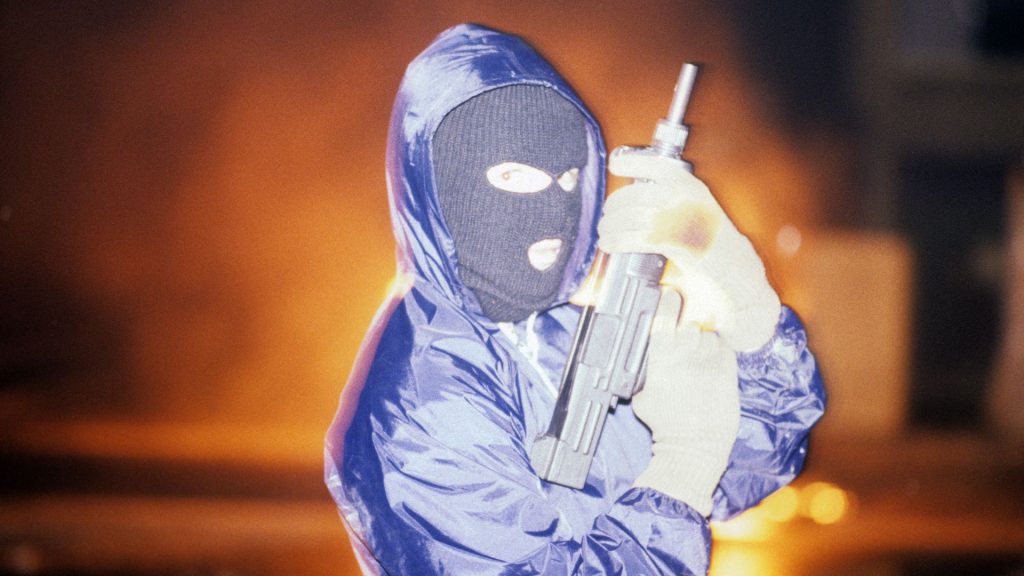
Its political wing, the Irish Republican Socialist Party, whose leadership briefly included Devlin, simultaneously contested elections, and Costello had acquired a certain political stature by the time he was assassinated in 1977 during a bloody feud with his erstwhile Official comrades.
By Finn’s account, that seemingly incidental subplot in the history of the Troubles prefigured Sinn Féin’s decision to start contesting elections in the 1980s whilst continuing the IRA’s terrorist campaign.
Having previously disdained left-wing political activism, the party began flirting with Marxism and vowed to take power “with a ballot paper in this hand and an Armalite in the other”.
Sinn Féin has since ditched both the Armalite and its revolutionary rhetoric. But Finn’s portrait of the organisation’s topsy-turvy political history remains timely.
Rather than Machiavellian masterminds with a clear long-term vision, Adams and his cohorts emerge in One Man’s Terrorist as perpetual improvisers and opportunists who plundered other people’s ideas whilst lurching their way towards an accommodation with the British and Irish states.
Their party’s current disposition is similarly protean. Having attempted to cobble together a left wing coalition after last year’s Irish general election, Sinn Féin is now cosying up to the populist conservatives of Fianna Fáil.
That shift coheres with Finn’s conclusion that the party’s commitment to soft-left social democratic policies is essentially shallow. “The possibility of movement towards Irish unity,” he writes at the end of his book, “is bound to pull Sinn Féin back towards the nationalist side of its political character.”
The party’s agitation for a border poll supplies further evidence of its ideological vagaries. Asked in March on Irish television whether she favoured assimilating Northern Ireland within the existing structures of the Republic or creating a new state, Sinn Féin president Mary Lou McDonald did not give a clear response.
Instead, she offered a characteristic blend of emollient pablum and traditional republican platitudes: “It is the incredible opportunity to realise an Ireland of equality, the kind of Ireland that is set out so poetically almost in the 1916 Proclamation”.
There is a growing middle ground in Northern Ireland consisting of voters who do not identify as nationalist or unionist, along with liberal unionists disaffected by Brexit.
Invoking the “poetry” of the Easter 1916 Rising is about as likely to appeal to them as a rendition of A Nation Once Again.
It is conceivable that a border poll will be held within the next 10 or 20 years, particularly if Sinn Féin enters government in the Republic and can pressure the British government to hold one.
Boris Johnson said recently that no border poll would occur “for a very, very long time”, which, given his peerless record of flipflopping, could well mean the opposite.
It is also possible – though far from certain or even probable – that the vote would go Sinn Féin’s way. But how the party would set about governing a nominally united Ireland is anybody’s guess.
One Man’s Terrorist: A Political History of the IRA, by Daniel Finn, is published by Verso
Max McGuinness teaches French at the University of Limerick
What do you think? Have your say on this and more by emailing letters@theneweuropean.co.uk









